Electric motors drive practically any gadget and machine with which we associate day-to-day life, from heavy industrial machinery down to applications in the domestic sphere. But over time, wear and tear due to a motor can necessitate replacement parts. The list can go on, including a faulty rotor, worn-out bearings, or a damaged stator. The selection of proper replacement parts is crucial in maintaining the motor’s efficiency and extending its longevity. This article is a complete guide to navigating motor replacement parts, offering pointers, insights, and practical advice that will see you through to the best components fit for your very own needs. Read on as you discover how you can keep your motor in the best working condition for many years to come.
Understanding Motor Replacement Parts
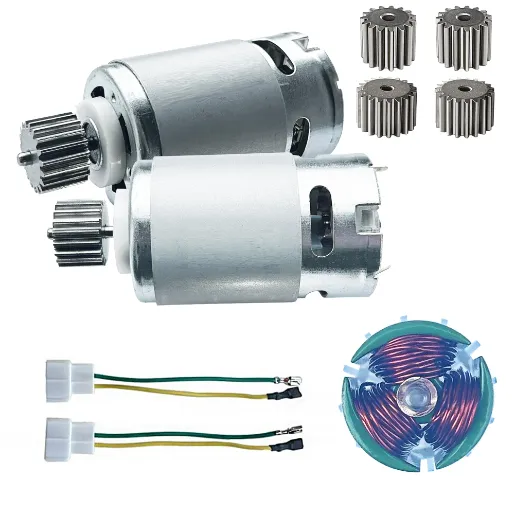
Motor replacement parts are essential components that maintain or repair motors, enabling them to work with greater efficiency and reliability. Other common parts are the rotor, stator, bearing, brush, and seal. Each of these components is crucial for motor functioning: the rotor and stators generate movement through electromagnetic forces, while the bearings reduce friction, and the brushes enable electric current to pass. When selecting replacement parts for your motor, ensure that you match the specifications of the original motor for optimal compatibility and satisfactory performance. Always obtain these from reputed manufacturers to ensure quality and durability.
What Are Motor Replacement Parts?
Motor replacement parts are essential components used in maintaining and servicing electrical motors to ensure they operate efficiently and reliably on schedule. These parts may include rotors, stators, bearings, brushes, seals, capacitors, cooling fans, and many more. Each part has its own function to handle: rotors and stators are subjected to electromagnetic actions to create motion, bearings minimize friction for longevity, and brushes assure electrical connectivity in predefined types of motors. With the advent of advanced manufacturing technologies, high-precision parts that offer improved durability and energy efficiency have been achieved. Understanding the concrete need of the motor and contacting its technical documentation would be the key to getting the right part. Finding and installing high-quality replacement parts increases the motor’s life expectancy and further reduces the likelihood of it being unavailable unexpectedly.
Types of Electric Motor Parts
| Part Name | Description | Key Function |
|---|---|---|
| Stator | Stationary component of the motor | Generates a magnetic field |
| Rotor | Rotating component within the motor | Converts magnetic energy to motion |
| Bearings | Support the rotor’s rotation | Reduce friction and wear |
| Windings | Coils of wire within the motor | Conduct an electric current |
| Shaft | The rotating element is connected to the rotor | Transfers mechanical energy |
| Brushes | Conduct current in DC motors | Ensure electrical contact |
| Commutator | Works with brushes in DC motors | Reverses current direction |
| Housing | External casing of the motor | Provides protection and structure |
| Fan | Attached to the rotor or housing | Aids in motor cooling |
| End Bells | Cover each end of the motor housing | Secure internal components |
| Insulation | Material surrounding windings | Prevents electrical short circuits |
| Terminals | Connection points for wiring | Supply power to the motor |
| Gaskets | Seals joints between components | Prevents leakage and contamination |
| Encoder | Sensor for position or speed | Provides feedback control |
| Capacitors | Store and release electric charge | Assist in starting or running |
| Coupling | Connects the motor shaft to external devices | Transfers power efficiently |
Importance of Quality in Replacement Parts
The quality of replacement parts significantly impacts work performance, reliability, and the lifespan of machinery or equipment. Top-quality components are therefore designed to standards; hence, they shall be compatible and fit with full capability. On the other hand, those of poor quality, counterfeit, and fake products all wear out even before their time, leading to huge losses in revenues and may also pose a hazard to safety. For example, inferior gaskets may not seal properly, causing a leak; likewise, bad capacitors may appear normal, but under stress, they would fail and degrade the motor’s performance. Studies show that manufacturers with a preference for durable, high-performing parts may face lower maintenance costs in the long run, accompanied by increased operational efficiencies. Indirectly, it is then an investment in keeping the equipment productive and safe in the present and for the future.
Categories of Electric Motor Parts
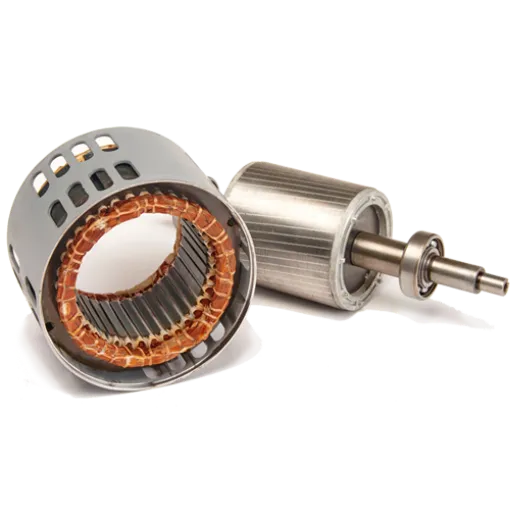
Electric motor parts can be broadly categorized into the following:
- Stator and Rotor: The stator is the stationary portion of the motor, while the rotor is the movable one. Both constitute the electromagnetic field necessary for the motor to operate.
- Bearings: Bearings support the rotor, thereby lowering friction to allow its free rotation. They are essential in maintaining motor efficiency and life span.
- Windings: Wire coils that generate a magnetic field within the motor that causes the operation.
- Enclosures: The enclosure prevents weather elements, such as dust, moisture, and debris, from entering the interior, thereby enhancing durability.
- Capacitors: Capacitors may supply additional power to start the motor or to stabilize motor operation under running load for certain types of motors.
- Shafts: The shaft conveys mechanical power generated by the motor to the machinery or load it is coupled with.
Grasping these primary categories will place one in a position to correctly maintain, repair, or replace components to ensure electric motors run smoothly through the input.
Accessory Parts for Electric Motors
Accessory parts for electric motors are additional components that enhance the basic motor’s functionality, improve performance, or extend its lifespan. The more commonly used accessory parts include:
- Motor Starters: These devices are designed for the safe start or stop of an electric motor and typically come with overload protection to prevent damage during operation. Modern motor starters can also be programmable for precise motor control.
- Encoders and Sensors: Encoders provide information about the speed and position of a motor for accurate control of various applications. Sensors, such as temperature or vibration sensors, are also used to warn of any threats that may cause the motor to fail.
- Cooling Fans: The cooling fans remove excess heat and maintain an optimal temperature for operation, especially in applications with high demand and where the motor can easily overheat.
- Braking Systems: Electric motor braking systems make for controlled braking intended for motors employed in equipment that requires precision or safety, such as elevators or assembly lines.
- Terminal Blocks and Connectors: Make working with electrical connections easy and ensure that power and data transmission to and from the motor are in a secure and reliable form.
Incorporating these accessory parts gives electric motors greater adaptability, reliability, and efficiency in fulfilling the demands of both industrial and household applications.
Repair Parts and Their Functions
Repairing parts is crucial for the maintenance and repair of electric motors, ensuring their longevity and optimal performance. These repair parts include:
- Bearings: Bearings are essential as they reduce friction between moving parts, allowing the motor shaft to rotate easily. They include ball bearings and roller bearings, which are used as per the requirements of the application.
- Brushes: Brushed DC motors and similar kinds of motors use brushes, thereby providing electrical contact to the commutator. These brushes wear down in time and must be replaced to avoid hamper on performance.
- Seals and Gaskets: They prevent ingress of dust, moisture, and contaminants into the motor housing, thereby protecting the internal parts from damage and retaining motor efficiency.
- Windings: Windings establish the magnetic field required for the operation of the motor. Repairing or rewinding the damaged windings may restore the motor’s operation without requiring a complete replacement.
- Capacitors: Start capacitors and run capacitors are crucial in single-phase motors for building up rotation and balancing voltage. They must be fixed immediately if a capacitor malfunctions.
With regular servicing and replacement of repair parts at the right time, electric motors survive downtime and guarantee longevity, making them reliable in numerous applications.
How to Find the Right Replacement Parts
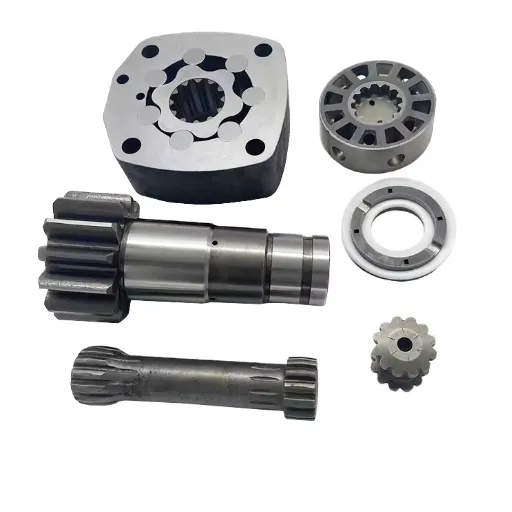
Finding a motor replacement is a really straightforward process:
Identify the Motor Specifications
Notice the nameplate on the motor to record details such as the model number, manufacturer, voltage, horsepower, and RPM. These details are essential to choose a part that fits the motor.
Consult the Manufacturer’s Documentation
The manual for the motor or the motor manufacturer’s website can indicate recommended parts to ensure that the parts will fulfill the motor specifications at design time.
Work with Reliable Suppliers
Purchase parts from reputable suppliers who specialize in motor electrical parts. They generally inform and educate you, insisting on good products.
Verify Compatibility
Be doubly sure that the replacement part you’re trying to install is the same size, type, and specification as the original before making any purchases, or else there may be malfunctions.
By performing this procedure, you ensure that your motor is fitted with the appropriate replacement parts, which preserve its performance and reliability.
Identifying Your Motor Type
Identifying your motor correctly is all-important for maintenance, repairs, or when ordering parts. Start with the motor nameplate, which carries all the information you need: model number, voltage rating, horsepower, and RPM. These details make the motor’s characteristics and its applications very obvious. Also, think about the motor designs-it is an AC motor or a DC motor, single phase or three phase, or does it belong to some special categories like servo or stepper? Once these distinctions are clear, one can use them to judge their function and applicability to their own design needs.
Using Part Numbers for Compatibility
Part numbers are crucial when you want to confirm compatibility while selecting a motor for replacement or to ensure proper functionality in a system. These identifiers provide answers to all specifications of that particular motor, including size, capacity, and features. Users, with the aid of part numbers, can cross-check with manufacturers’ catalogs, datasheets, or online resources to verify that the motor will perform according to the desired requirements. This minimizes the possibility of buying a motor that is not compatible and operating seamlessly in the intended application. Additionally, part numbers include details of manufacturing processes, identifying variants, and upgrades that can enhance the efficiency or reliability of the system.
Where to Shop for Motor Replacement Parts
There are many reliable options to consider when shopping for motor replacement parts. You have access to numerous reputable online platforms, including Amazon, eBay, and other industrial supply-oriented websites, all of which offer the widest selections possible, along with descriptions that indicate which items will fit best. Most manufacturers also provide direct sales on their websites to confirm the authenticity of the part and to guarantee the latest model or product upgrade. Local distributors and hardware stores make excellent alternatives should you require immediate service or simply want expert advice. Again, consulting with suppliers equipped with a technical support team to back their claims could help you navigate a demanding scenario that requires components perfectly tailored to your system’s requirements.
Installation and Maintenance of Replacement Parts
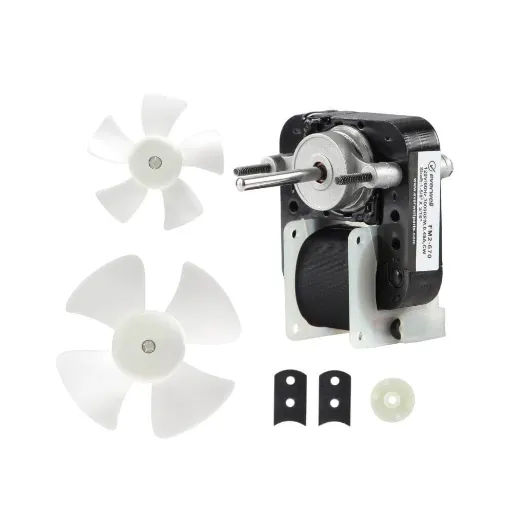
Incorrect parts must be installed correctly, and equipment must be serviced regularly to ensure the parts function properly and provide the longest life for the equipment. Some key steps to follow are:
Installation
- Always refer to the manufacturer’s installation manual for specific instructions.
- Power off the equipment and disconnect from any energy sources before installing a replacement part.
- Through the use of proper tools, the replacement installation should be done with care to avoid damaging adjacent parts.
- Reconnect and test the equipment to confirm that the part is working.
Maintenance
- Perform regular inspections to detect any wear or damage early.
- Clean components as advised by the manufacturer to prevent any accumulation that may hinder operation.
- Replace consumable items, such as filters or belts, as needed.
- Maintained logs on repairs and replacements, shall coordinate better planning and troubleshooting.
Studying and practicing the above will maximize good performance and minimize the likelihood of being faced with costly breakdowns or further repairs. Always seek expert assistance when you are unsure about any installation or maintenance processes.
Common Mistakes to Avoid During Installation
Skipping the Instruction Manual
Some common mistakes include failing to read and follow the manufacturer’s instructions. Each product has its installation instructions for proper installation.
Incorrect Measurement or Alignment
Before installation, or indeed before buying a replacement part, a comparison of the measurements is crucial. A variance, even the smallest one, may compromise functionality. Double- and triple-check your dimensions and alignment to ensure the parts fit perfectly and perform excellently.
Using the Wrong Tools
Installing components with improper or low-quality tools may damage the components or result in an incomplete assembly. As such, one should always ensure that the recommended tools are ready before starting the task to avoid unnecessary delays.
Overtightening or Undertightening Fasteners
Applying too much force when tightening screws, bolts, or nuts …or any other fastener, will strip or break them. Not giving enough tightening could cause the assembly to be unstable. For proper installation, use torque specifications as a guide.
Neglecting Safety Precautions
Performing an activity without safety precautions, such as switching off power supplies or using protective gear, can lead to an accident. Do not compromise safety at any point to avoid injuries and to ensure a smooth process.
Ignoring Testing After Installation
Potential faults that could become a greater problem over time may go undetected if components are not tested immediately after installation. Always test components immediately after installation to rectify any malfunctioning without delay.
Regular Maintenance Tips for Electric Motors
Perform Routine Inspections
Motors should be observed, taking note of some signs of wear and tear, such as loose bolts, unusual vibrations, or overheating. This early response to detection will prevent greater problems ahead. Generally, inspecting electric motors twice a month would suffice for most applications.
Keep Motors Clean
Dirt, dust, and other debris may clog ventilation and cause overheating. Ensure to clean the motor exterior and ventilation openings regularly. In moderately dusty environs, clean at least once every fortnight.
Lubricate Bearings Properly
Lubricate bearings according to the manufacturer’s instructions, using the recommended lubricant type and quantity, never exceeding the advised amount, as over-lubrication can lead to bearing overheating. If all goes well, most motors are relubricated every 1,500 to 5,000 hours of operation, depending on the severity of their service and operating conditions.
Monitor Operating Temperatures
Excess heat is one primary reason that any type of motor fails. Be sure to use thermal detection devices to monitor operating temperatures on a regular basis and verify that they never exceed the safe levels specified by the manufacturer.
Check Electrical Connections
Loose or corroded electrical connections cause power inefficiency and motor deterioration. Inspect and tighten connections every three months for proper operation.
Conduct Vibration Analysis
Vibrations occur to indicate misalignment, imbalance, or even internal wear of components. Such anomalies detected using vibration monitoring tools need to be mapped out and rectified promptly to avoid the consequences of indicative severe damage.
Troubleshooting Electric Motor Issues
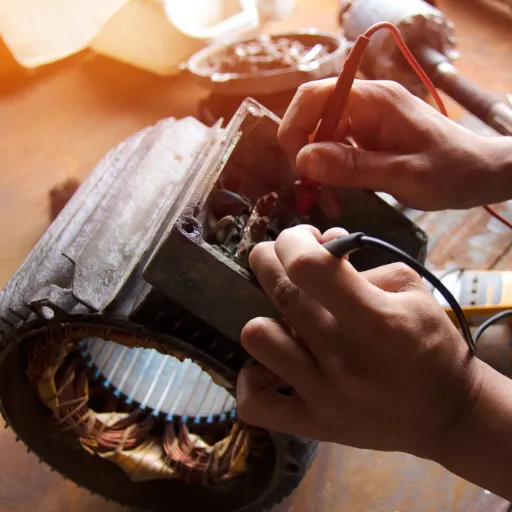
Check the Power Supply
Check that the motor receives the correct voltage and that the supply is stable. Also, check for blown fuses, tripped breakers, or broken wiring.
Inspect for Overheating
It is overhot-clad for overloading, inadequate ventilation, or internal faults. Check to see if the heatsinks are blocked, and that the motor is not under excessive load.
Evaluate Unusual Noises
An audible, strange noise typically indicates bearing wear, or possibly misalignment or loose components. Conduct a physical inspection and listen with great concentration to attempt to isolate or ascertain the source.
Test Motor Windings
Take an ohmmeter or insulation tester and measure the resistance of the motor winding. They should look for short circuits, open windings, or insulation breakdowns.
Assess for Vibration Issues
An unusual vibration can be caused by poor alignments, imbalance, or loose components. Check the fastening bolts; alignments between motor and load, and rotary parts.
Examine the Load
Check whether loads connected with the motor are either beyond or under normal stressing capacity, creating either overloading or uneven stressing.
Identifying Common Motor Problems
There are many common problems that electric motors experience due to deterioration, environmental factors, or misuse. Overheating is a common problem that arises from a lack of cooling, overloading, and insufficient ventilation. Insulation deterioration may occur if motors are subjected to high temperatures for prolonged periods, reducing motor efficiency and sometimes resulting in sudden failure.
Another one is bearing failure-a great deal of motor failures can be attributed to it. Operating conditions that include contamination, the absence of lubrication, or misalignment can all adversely affect bearing operation, generating abnormal noise and vibrations. Additionally, electrical faults such as phase imbalance, voltage irregularities, or insulation failure also warrant consideration. Such faults impair the motor’s performance, and if prolonged, could cause damage.
When to Replace Parts vs. Repair
Deciding whether to replace or repair components depends on several factors, including the extent of damage, cost implications, and the reduced importance of the motor in relation to production operations. For minor problems, such as wear from ordinary use, repair may be adequate to restore that part to working condition; on the other hand, where bearings or windings are either seriously damaged or have reached the end of their expected life, then replacement is, in the long run, a cheaper and more reliable option.
It is also necessary to compare the level of efficiency and downtime associated with the two options. Research reveals that replacing parts that are very old or seriously damaged can significantly increase energy efficiency, thereby reducing operating expenses over time. For example, new generation high-efficiency bearings can reduce frictional losses and improve performance. Repairs might be recommended, however, in cases of specific faults such as those involving minor degradation of insulation, as long as the overall condition of the motor is considered to be good.
Apart from the above, a thorough diagnostic assessment, usually supported by advanced monitoring tools, will inform any decision, weighing the initial cost against long-term reliability and performance.
Reference Sources
1. Economical Replacement Decision for Induction Motors in Industry
- Source: IEEE Xplore
- Summary: This study investigates the economic aspects of replacing old, low-efficiency, or oversized induction motors. It highlights the significant energy consumption of induction motors (30% of industrial energy) and the efficiency losses due to aging.
2. A Review of Circular Economy Research for Electric Motors and the Role of Industry 4.0 Technologies
- Source: MDPI Sustainability
- Summary: This paper provides a comprehensive review of circular economy strategies for electric motors, focusing on reuse, remanufacturing, and recycling. It identifies gaps in research, such as the lack of methodologies for selecting optimal end-of-life scenarios.
Frequently Asked Questions (FAQs)
Q: What types of electric motor repair parts are available?
A: Electric motor repair parts vary widely for manufacturers and models. Typical components include blades, adapters, and mounting kits that serve in the repair process. There may also be specialized items, such as adjustable motor bases and core components, designed to provide a performance upgrade. When repairing electric motor parts, ensure compatibility with your specific motor type. Always verify whether the purchased parts are OEM or aftermarket to assess quality and durability.
Q: How do I choose the right brand for motor replacement parts?
A: The right choice for motor replacement parts depends on compatibility, reliability, and warranty. The brand should be well-known in the industry for marketable OEM and aftermarket parts. Brands can be best assessed by customer reviews that comment on how specific brands and types have performed. The brands that offer a variety of parts, including high-end versions for fans and adjustable bases, are the best in the long run. A good brand will thus ensure that the motor parts you obtain are durable and work well together.
Q: What tools do I need to repair motor parts?
A: To undertake the motor parts repair correctly, you will need to assemble some equipment necessary for the shop. The tools will essentially include screwdrivers, a collection of wrenches, and pliers to disassemble and reassemble the various components. Depending on the myriad of repair activities you conduct, you might need some special equipment, like a multimeter for electrical tests in working with circuitry or a torque wrench for fastening very exact torque-value requirements. It is also good practice to keep your workplace clean and tidy, and to keep your parts organized, such as oil, mounting hardware, and so forth. All these go a long way in reducing headaches during repair.
Q: Are there adjustable motor bases available for various applications?
A: Adjustable motor bases exist for different applications and would thus be a good addition to your inventory of motor replacement parts. These bases provide flexible mounting alternatives to suit various motor sizes and configurations. When selecting an adjustable motor base, ensure it is compatible with your application and the specific motor type. Since many manufacturers offer options in premium materials for maximum durability, they will definitely have a positive impact on the proper alignment and serviceability of your motors, making them an ideal choice for any professional repair work.
